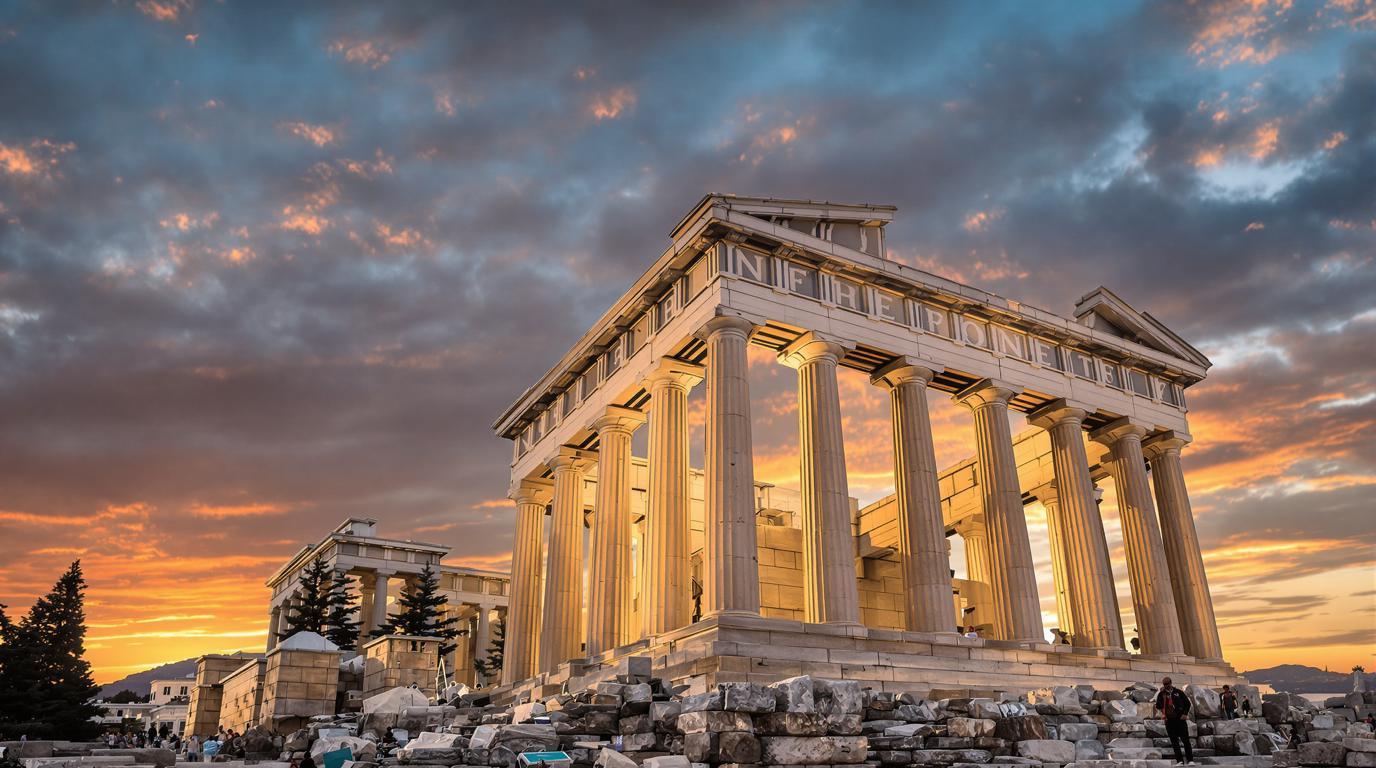Athens’ iconic hilltop has captivated visitors for millennia, but few truly understand what makes the Acropolis one of humanity’s most profound achievements. This ancient citadel isn’t just Greece’s most recognizable landmark—it represents the birth of Western civilization itself, with structures that have survived wars, earthquakes, and 2,500 years of history.
The surprising engineering marvel that predates modern mathematics
The Parthenon, centerpiece of the Acropolis, contains no straight lines. Every seemingly straight edge actually curves slightly—a sophisticated optical illusion designed to make the massive structure appear perfectly straight to the human eye. This architectural genius emerged centuries before calculus was invented.
As one local guide explains:
“What visitors don’t realize is that these ancient Greeks achieved perfect visual harmony without computers or modern tools. The Parthenon’s secret is that nothing is actually straight—everything subtly curves to create the illusion of perfection.”
The hidden entrance most tourists never discover
While crowds funnel through the main entrance, the South Slope offers a more peaceful experience. This alternative pathway leads past the ancient Theater of Dionysus, considered the birthplace of European drama, where plays by Sophocles, Euripides, and Aristophanes first premiered before wildly enthusiastic crowds of 17,000 spectators.
Like the theaters of ancient Greece, Switzerland’s dramatic alpine landscapes have inspired artists and travelers for centuries.
When the marble glows golden (and crowds disappear)
Timing transforms your Acropolis experience entirely. Visit during “golden hour”—the final hour before closing time—when the low-angled sun bathes the Pentelic marble in warm amber light, creating spectacular photo opportunities as the daytime crowds thin dramatically.
Similar magic happens at this medieval French village, where ancient stone walls capture the golden light of sunset, creating an enchanting atmosphere.
The ancient carvings that were once brightly painted
The pristine white marble we associate with Greek architecture is actually a historical misconception. The Parthenon and surrounding temples were originally painted in vibrant blues, reds, and golds—a colorful spectacle far removed from today’s monochromatic ruins. Tiny pigment traces remain detectable under special lighting.
The sacred olive tree with a miraculous history
Near the Erechtheion stands an olive tree with a remarkable story. According to Greek mythology, Athena and Poseidon competed to become patron of Athens. While Poseidon struck the rock creating a saltwater spring, Athena gifted an olive tree—symbolizing peace and prosperity. The citizens chose Athena’s gift.
Archaeological professor Dimitrios Papanikolaou notes:
“The olive tree we see today is a descendant of the original sacred tree. When Persians burned the Acropolis in 480 BCE, Athenians claimed the original tree miraculously sprouted new growth the very next day—a symbol of Athenian resilience.”
The secret viewpoint few photographers know about
For spectacular photos, bypass the crowded main viewpoints. Instead, head to Filopappou Hill directly across from the Acropolis. This lesser-known vantage point offers unobstructed panoramic views of the entire complex against Athens’ sprawling cityscape extending to the sea.
Seekers of dramatic viewpoints might also appreciate this uniquely shaped French wine museum with its impressive 360-degree vistas.
How to experience the acoustics that amplified ancient voices
Stand at the center of the Theater of Dionysus and speak in a normal voice—you’ll be amazed as your words project clearly to the highest seating rows without any amplification. This acoustic engineering marvel allowed ancient actors to be heard by thousands without microphones.
Natural acoustics create similar magic in America’s hidden river canyons, where the sounds of rushing water echo dramatically between towering walls.
The mysterious caryatids guarding ancient secrets
The six female figures supporting the Erechtheion’s south porch (with originals now in the Acropolis Museum) aren’t just decorative. Each statue is engineered with a slightly bent knee to distribute weight—an early understanding of structural physics. Their serene faces betray nothing of the engineering brilliance behind their design.
Just as these ancient structures hide secrets beneath their beauty, Polynesian islands conceal spectacular hidden waterfalls behind their postcard-perfect beaches.
